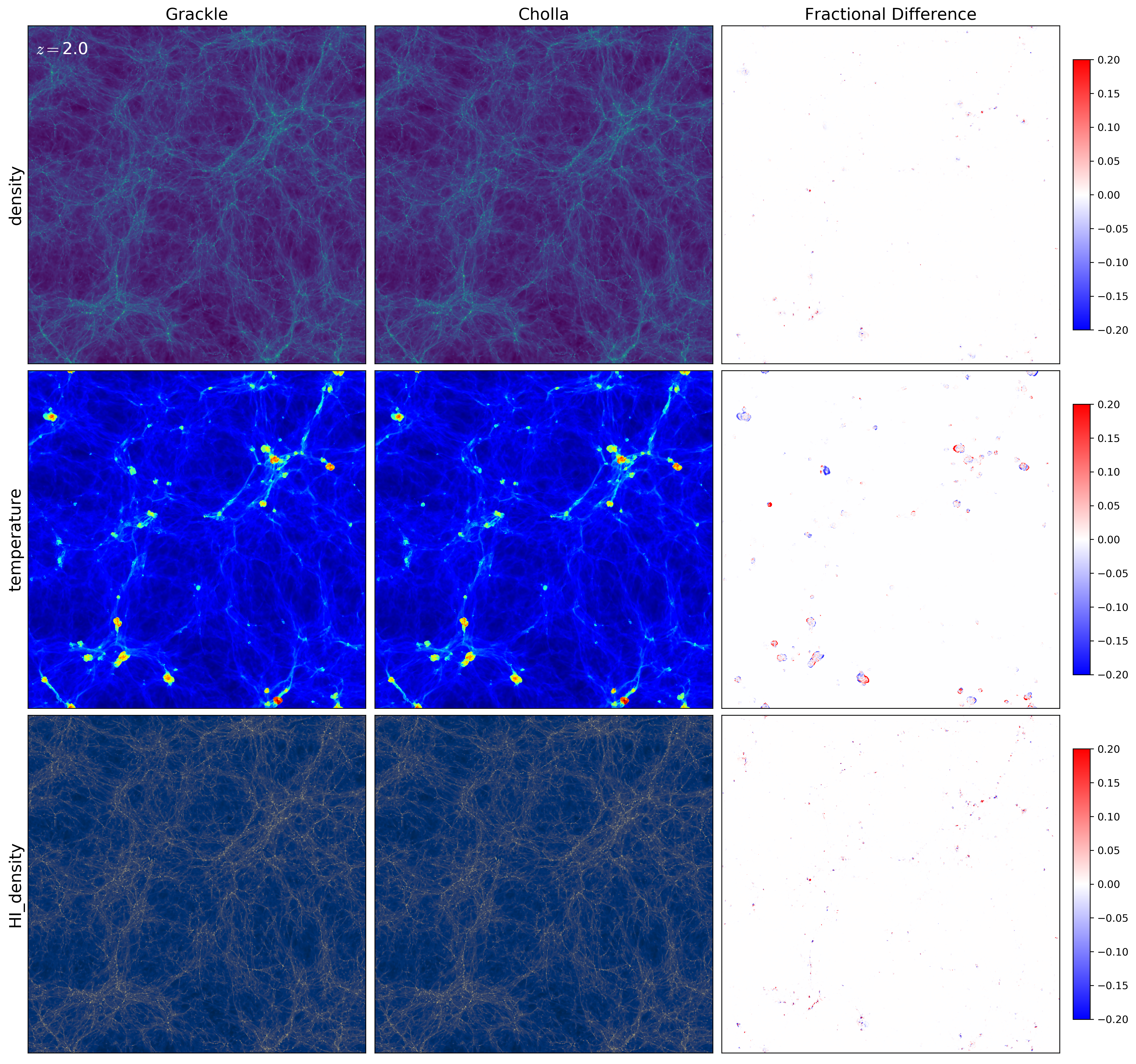Cholla Chemistry solver compared to Grackle Revised
After rewriting the solver to closely follow the methodology from Grackle the results are very good.
Single zone test
First I compare a “single zone” test where the simulation is a small box with uniform density, zero velocities and uniform temperature. I compare the same simulation but in one case I use Grackle for the Chemistry/Cooling and for the other case I use the solver that I have implemented into Cholla.
The evolution of the temperature and the abundances of the chemical species are shown below:
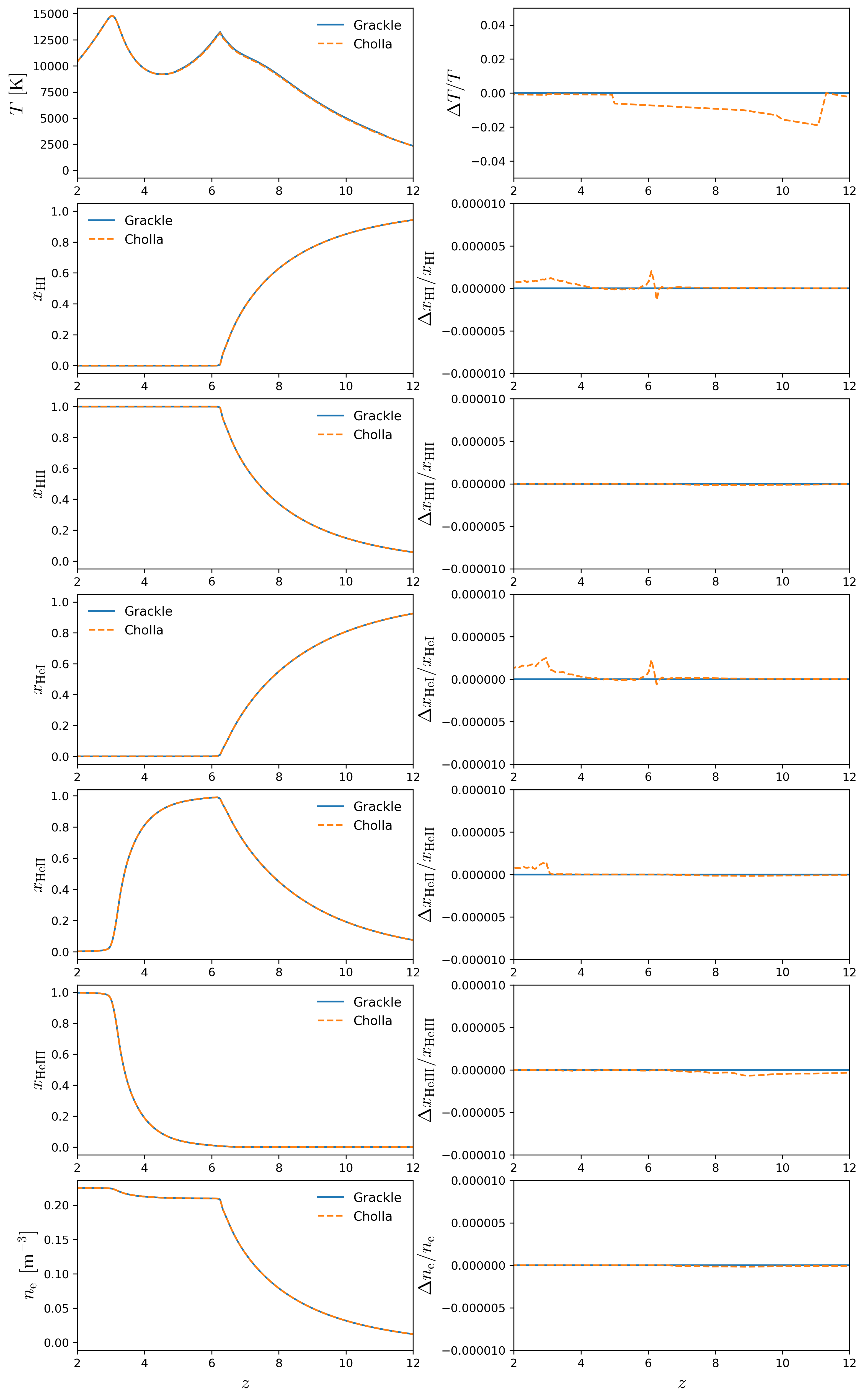
There are some small differences around 2% in the temperature. The ionization states of H and He seem extremely close showing differences smaller than 0.0001% !!!
Density-Temperature distribution
Now I run a full cosmological simulation ( \(L=50 h^{-1} \mathrm{Mpc}\), \(N=256^3\) ). Below I compare the evolution of the density temperature distribution
Lya Transmitted Flux along skewers
From a higher resolution simulation ( \(L=50 h^{-1} \mathrm{Mpc}\), \(N=1024^3\) ), I measure the Lya transmitted flux along some skewers crossing the box, the comparison for several redshift values is below
\(z = 5.0\)
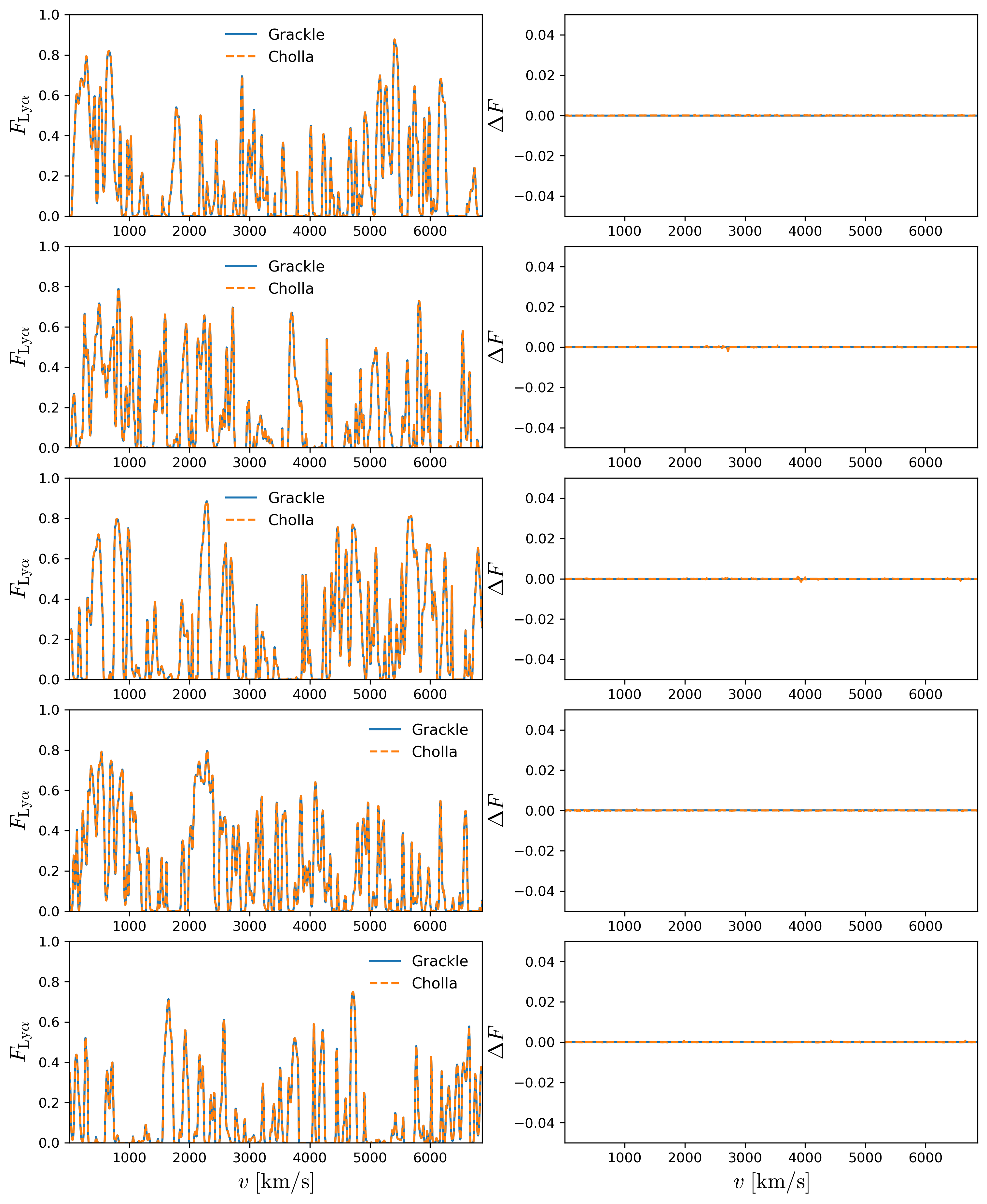
\(z = 4.0\)
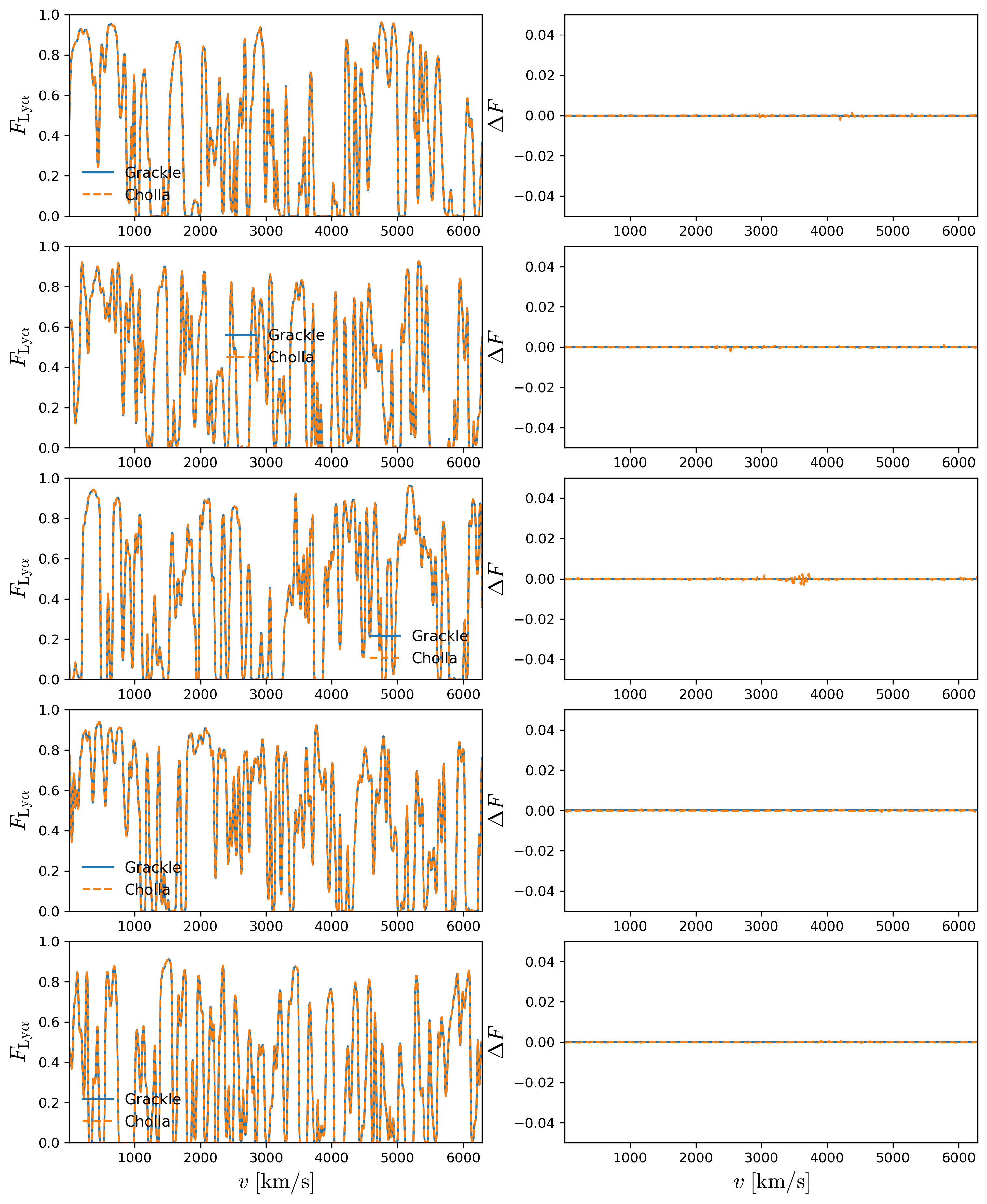
\(z = 3.0\)
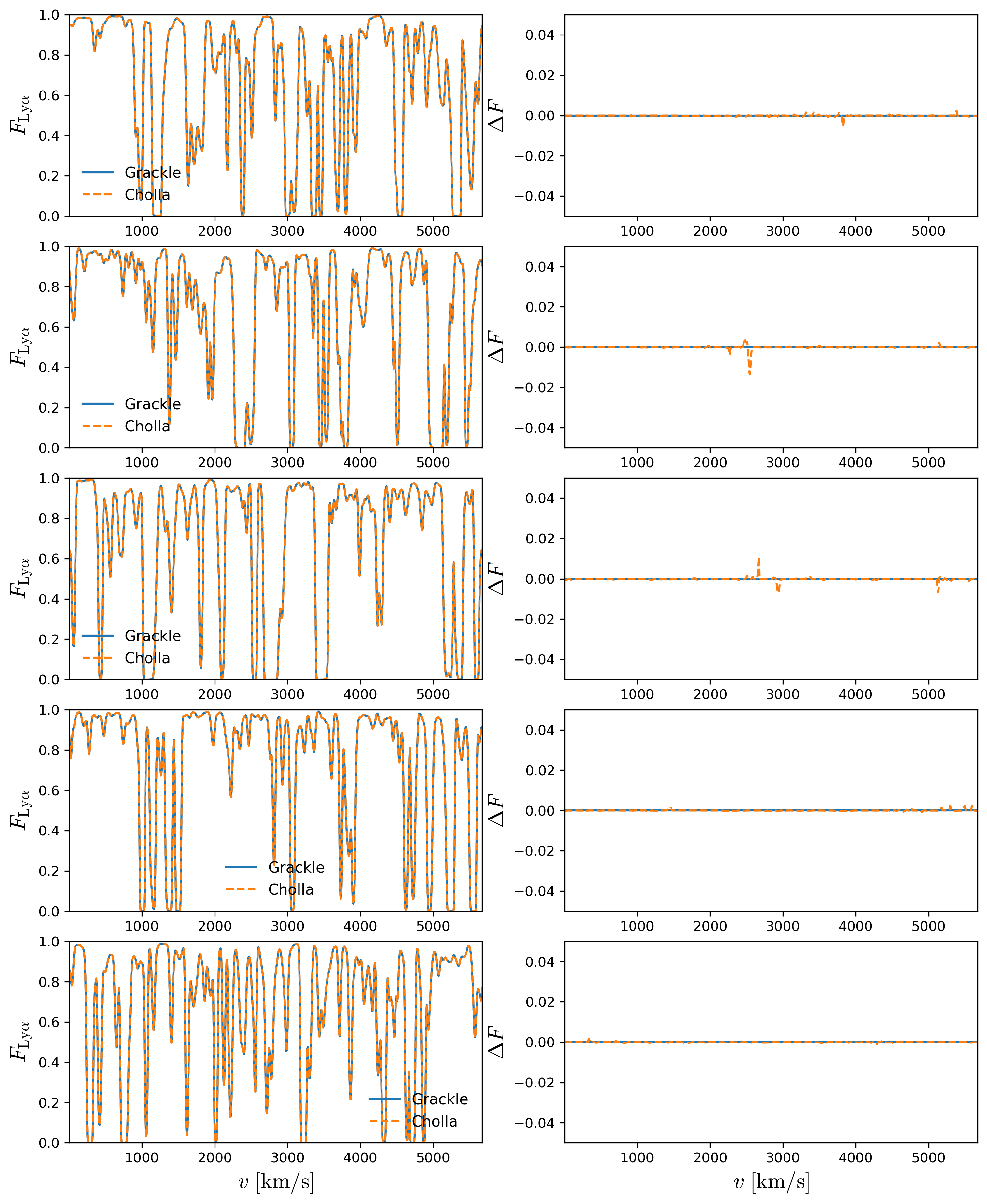
\(z = 2.0\)

Lya Flux Power Spectrum
From the ( \(L=50 h^{-1} \mathrm{Mpc}\), \(N=1024^3\) ) simulation, I measure the evolution of the Lya Flux Power Spectrum, the comparison is below:

Only small differences on the highest \(k\) bin.
Slices from the Simulations
z=5.4
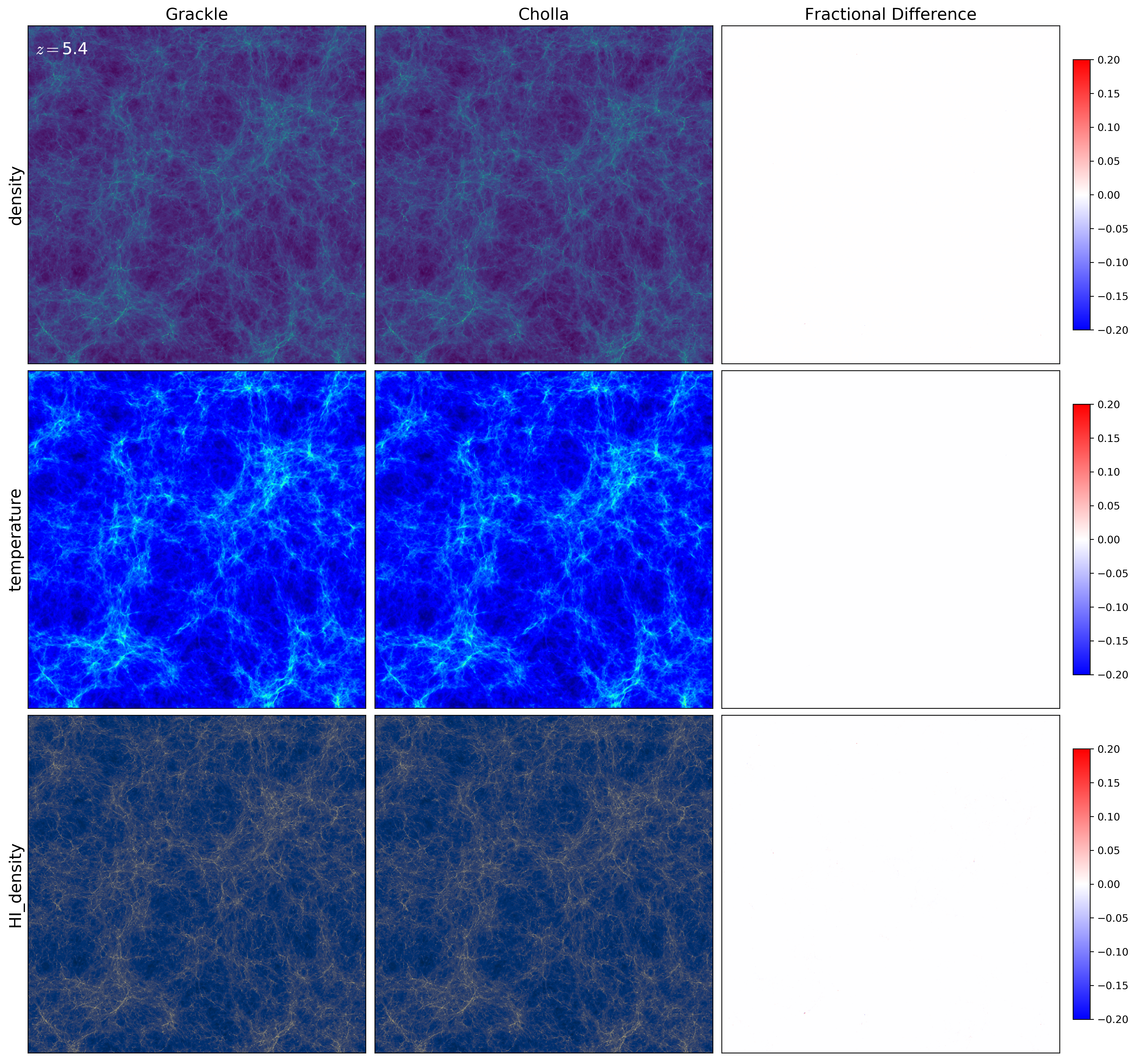
z=4.0
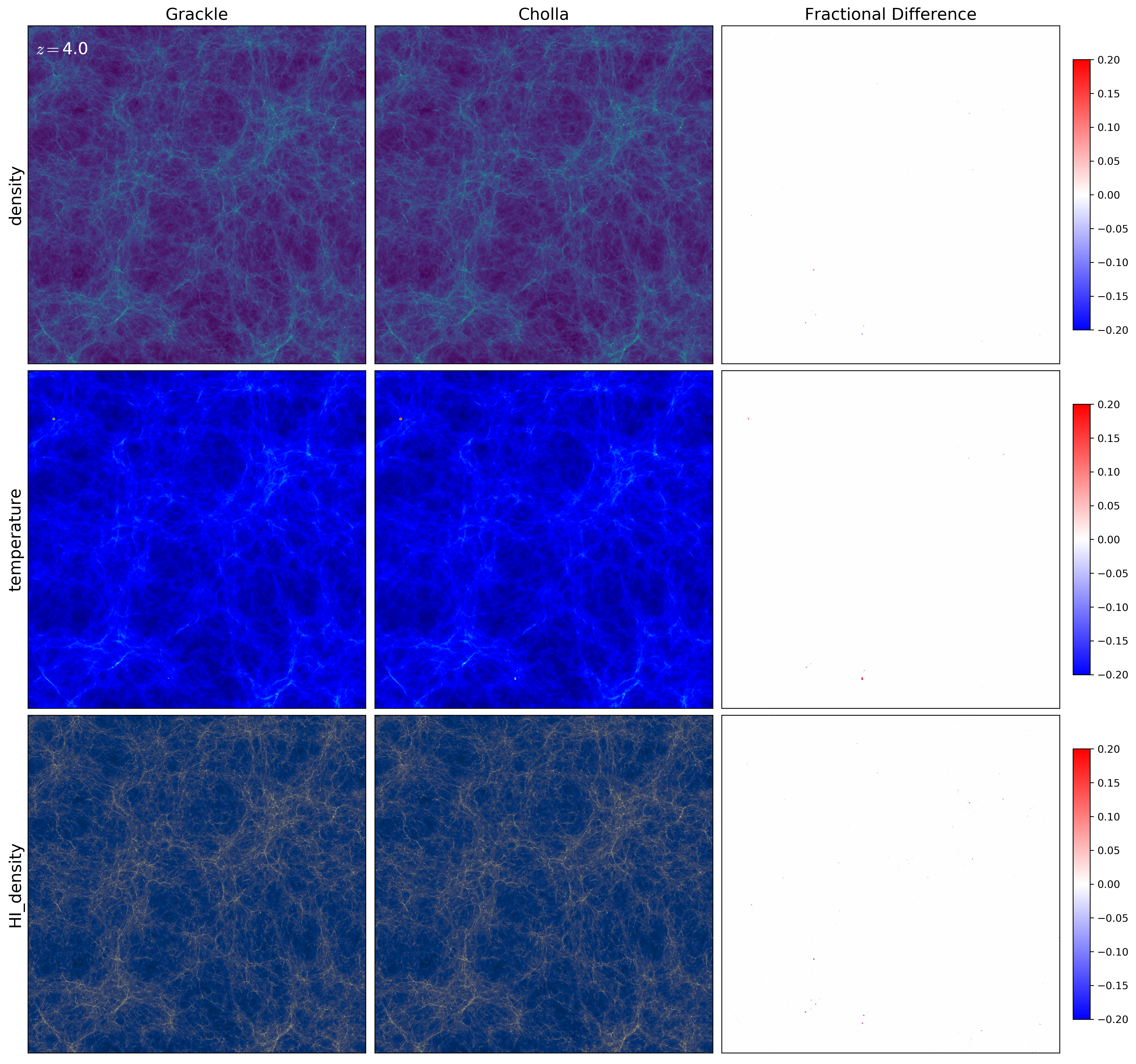
z=3.0
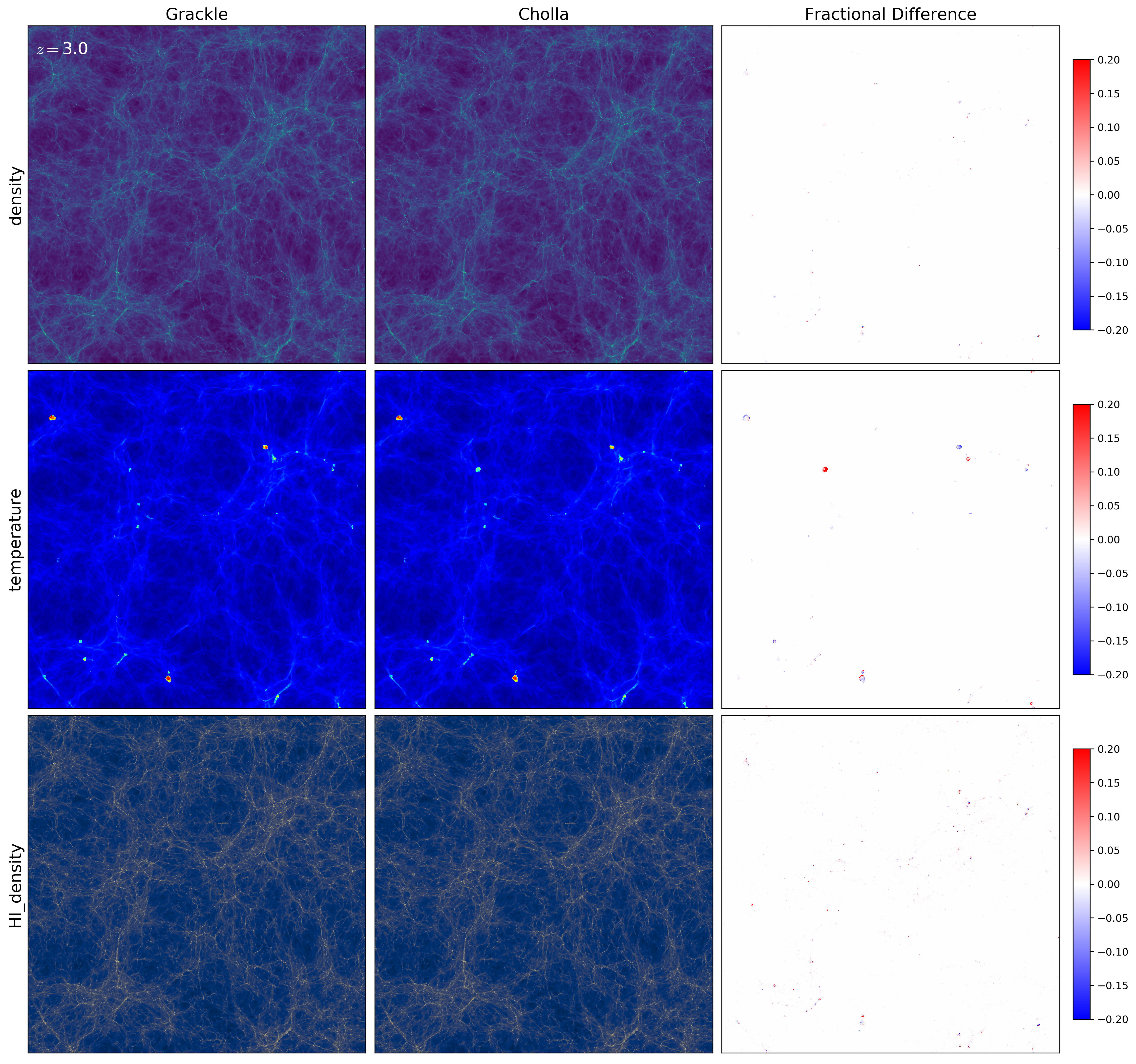
z=2.0
